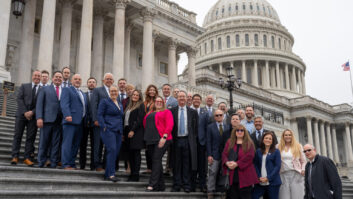Atlanta – The custom industry is bracing for a slow climb out of a long slump as it heads into this month’s CEDIA Expo, where show management and exhibitors hope to arm electronic systems contractors (ESCs) with new business strategies and new products to rebuild an industry whose growth drivers – new-home construction and home remodeling – remain weak.
During the Sept. 22-26 show, CEDIA will unveil its first New Technology Pavilion to highlight profit opportunities in such areas as energy management, home health monitoring, and residential communication, including telepresence, or high-resolution home video conferencing on a big-screen TV. A Home Health Technology Pavilion will give installers hands-on experience with technologies said to enable consumers to “age in place.”
CEDIA also plans panel discussions on the opportunities promoted in its new technology pavilion.
All told, CEDIA expects 450 exhibitors occupying 383 booths to turn up at this year’s Expo, compared with 2009’s 426 exhibitors in 384 booths and 2008’s more than 500 exhibitors. CEDIA said it is hopeful this year’s attendance will remain at 2009’s level of more than 20,000. In 2007, attendance was 29,000.
(See story atr left for a look at some of the companies planning product introductions.)
Though attendance has fallen in recent years, marketers believe the industry has likely bottomed out. From January through July, single-family housing starts grew 18.4 percent to 297,600 units, and the National Association of Home Builders (NAHB) forecasts a 45.1 percent gain in 2011 and 39 percent in 2012.
Though new-home starts are rising, the NAHB forecasts put 2012 starts at only 1.015 million, far below the housing industry’s peak year of 2005 with 1.71 million single-family starts.
To cope with diminished expectations that the housing industry will return to its peak anytime soon, many installers have retooled their marketing strategies to go after retrofit installations in existing home, but the strategy can go only so far, said Jim Annes, VP/GM of national distributor AVAD. “It’s not reasonable to expect the market to grow
consumer expenditures for retrofit installs are coming from discretionary income. In contrast, the custom market had previously been driven by accelerating new-home construction and major home remodeling projects, which depended largely on consumers qualifying for second mortgages and home-equity loans based on rising home values, he explained.
Annes forecasts single-digit growth in the residential custom industry as long as the country doesn’t run into any more “significant macro-economic problems.”
Last year “was painful,” he said, but the industry has been left with “the strongest players” among ESCs.
The most successful of these players are targeting the retrofit market, and many have diversified into light- and medium-commercial installation as well as networking and security, Annes said. More are also tackling energy-management jobs, ranging from automatic motorized shades, light-control systems and remote monitoring of lights.
Like Annes, Progressive Retailers Organization (PRO Group) Dave Workman, executive director/COO, has also seen signs of life, calling 2009 “really brutal” in the custom industry but exhibiting “a bit of an uptick” in 2010, mainly in “reachable” $20,000-$50,000 installations as the number of installs above $100,000 fell. Many installers, Workman and others noted, are doing more installations this year but at lower price points than a couple of years ago. Workman cited the economy’s impact on consumer spending as well as the declining price of technology in general.
CEDIA CEO Utz Baldwin also sees other factors driving down system pricing. He cited anecdotal evidence that installers are doing more work but generating the same amount of income in part because of increased competition, which could be caused by a number of factors. One is that installers are bidding on jobs they would have previously passed by. Another is the entry of electrical and security contractors into audio/video installation, and another is that installation companies that were shut down spawned new companies headed by former employees.
Whatever their numbers, installers have to change the way they go to market, relying less on networking with the builders, architects and interior designers who could provide opportunities to install systems in new homes under construction and in major home renovations, said Jeff Kussard, strategic development director of distributor Capitol Sales.
Some dealers are also changing by diversifying into commercial installs, energy management, wireless lighting systems for retrofit installation, and installation of other retrofit systems. “Survey responses from our members clearly indicate a shift to retrofit,” added CEDIA’s Baldwin.
At least one marketer, however, believes installers should broaden their retrofit focus to include no-new-wires technologies, but by and large, few are doing so, said Capitol’s Kussard. “For installers, retrofit typically means punching holes in walls, pulling wires, and patching holes,” he said. “It takes a very strong-willed consumer to subject themselves to that type of project, so the sales opportunity is very small.” With a no-new-wires approach, you can complete the same project in hours or days versus weeks or months.”
Kussard pointed in part to “all kinds of homes” with redundant CAT-5 and coax wiring installed in new homes during the boom years to future-proof an install. “Manufacturers see this as a huge opportunity, but the dealer community hasn’t yet, maybe because no-new-wires technology wasn’t reliable in years past or because there is a fear to embracing this change.”
“We made a living off 1 percent of the market for the past 20 years,” Kussard said, citing Census Bureau and market statistics showing that during the housing boom’s peak years, new homes accounted for only as much as 5 percent of total households and that home technology penetrated only 20 percent of new homes.
Should dealers not embrace the no-new-wires concept, other marketers still see upside potential in the longer term. “Innovation and technology will help in the recovery,” CEDIA’s Baldwin said. “Consumers want technology,” and many home technologies “are moving into the mass market,” he said.
Even in the short term, “homeowners are spending money, but they are smarter about it,” Baldwin said. “They might not put in a pool, but to keep teens at home, they’ll install home entertainment.”
PRO Group’s Workman sees future potential for installers to team with utilities that are building smart energy grids. Installers could integrate Control4-type home-control systems with a utility’s smart meter, enabling utilities to control a home’s electricity consumption.
Installers, however, must not only offer new types of products to prosper in the future, they must also shift stances as technology drives down product prices to become value-added resellers who offer “value in a solution, not a box,” Baldwin noted.













